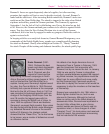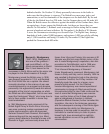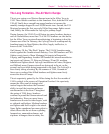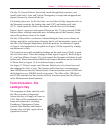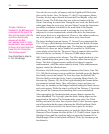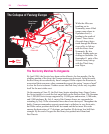
150
Close Combat
With the collapse of Sicily, Eisenhower wants to land on the Italian
mainland. When he receives permission to proceed, he plans a
diversionary attack across the Strait of Messina, carried out by
Montgomery’s Eighth Army on September 3. While there is good
progress initially, Montgomery is cautious
a trait the Germans
capitalize on by fighting an effective rear guard action. Eisenhower’s
main assault is an amphibious landing near Salerno on September 9.
General Mark Clark commands the U.S. Fifth Army, which includes
both American and British divisions.
The British First Airborne Division lands by sea at Taranto and captures
the port city without opposition. The main landings near Salerno face
strong resistance, but as more troops land, the beachheads are quickly
expanded. Montgomery’s advance is still slowed by poor roads and
German demolition crews who blow up bridges and other structures to
slow the Eighth Army’s advance. By September 11 a pattern begins to
emerge: the Allies make progress early in the day, but are pushed back
by the end of the day. Morale among the Allied troops begins to flag in
the face of tough German resistance.
By September 13, the Germans believe they can drive a wedge between
the American and British sectors of the Salerno Beachhead. Units from
the 16th Panzer and 29th Panzergrenadier Divisions slam into the
Allied lines, and some German units drive to within one mile of the
beach. But concentrated naval fire prevents the Germans from gaining a
decisive victory; as the Allied lines stabilize, Eisenhower and Alexander
agree on rapid reinforcement of the beachhead. On September 13 and
14, General Ridgeway’s 82nd Airborne Division parachutes onto the
beach. While the Germans continue to pound the Allied lines, air
support and naval fire again prevent them from breaking through. They
regroup on September 15, and the next day again try unsuccessfully to
crack the Allied lines.
By the end of the month, the Allied armies are making steady progress
north; the Germans fight delaying actions in several places, giving
many of their units time to withdraw to the predetermined defensive
lines. They blow up bridges and leave booby traps to further delay the
Allied advance, but on October 1 Naples falls to the Fifth Army.
The Germans plan to fall back to two intermediate defensive lines
before they reach their primary defensive positions at the Gustav Line
(which runs from the mouth of the River Garigliano in the west to the
mouth of the River Sangro in the east). The hilly terrain is excellent for
defense
the Allies are funneled into valleys or forced to fight their
“Corporal Joseph Toporski, a
paratrooper from Milwaukee,
shot two snipers and was
looking for a third when an
Italian girl named Marissa
tapped him on the shoulder as
he peered around a building
and asked him if he would like
to go to her apartment and
listen to American phonograph
records. Corporal Toporski took
an hour off for recreation. He
got the third sniper on the way
back to his unit.”
From
Yank
, an American
military publication




